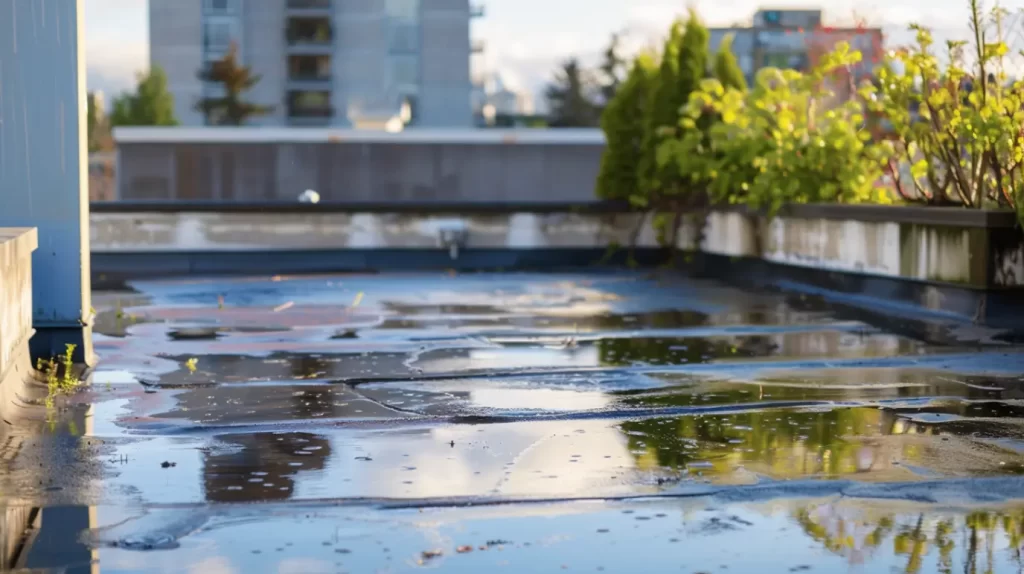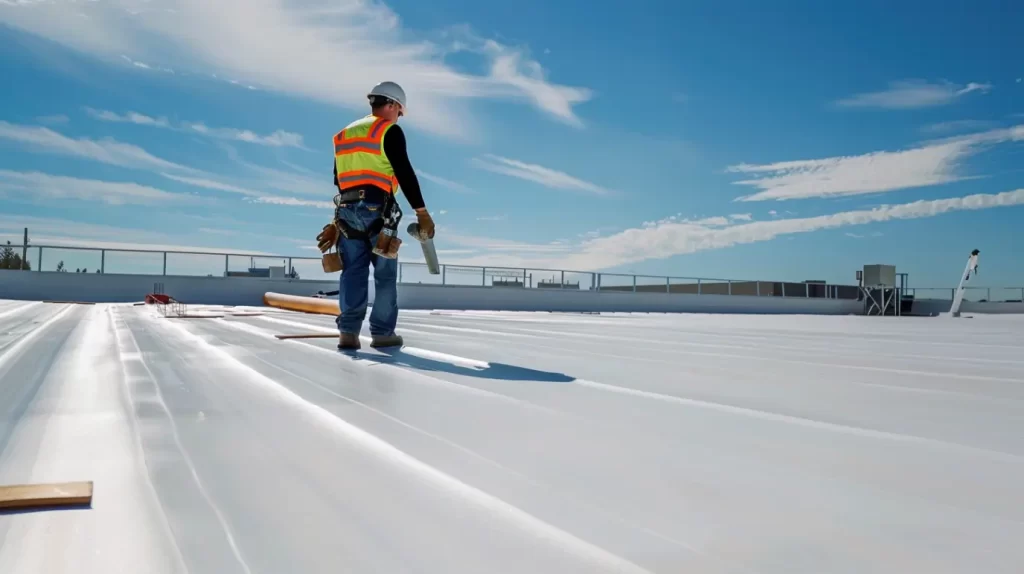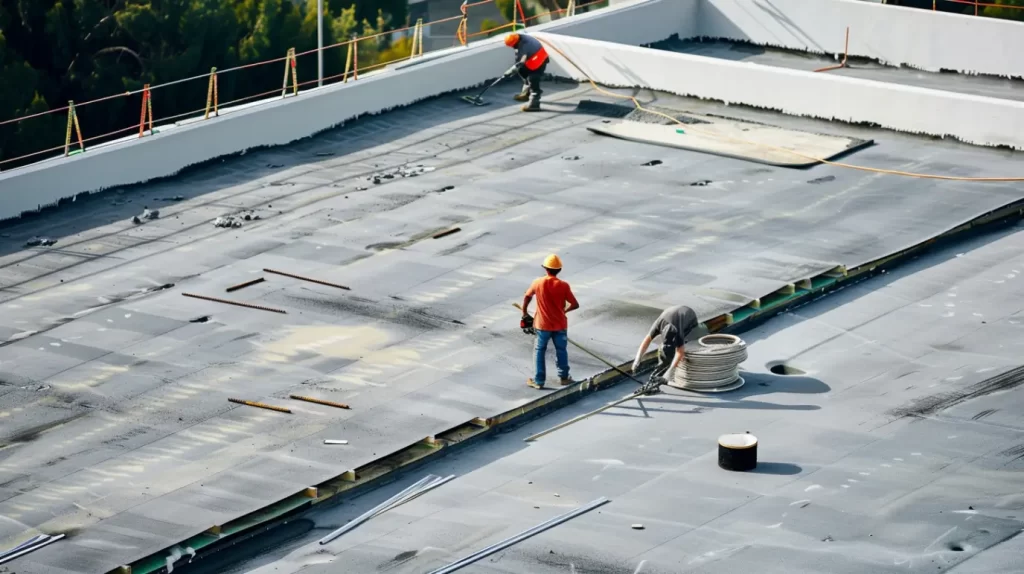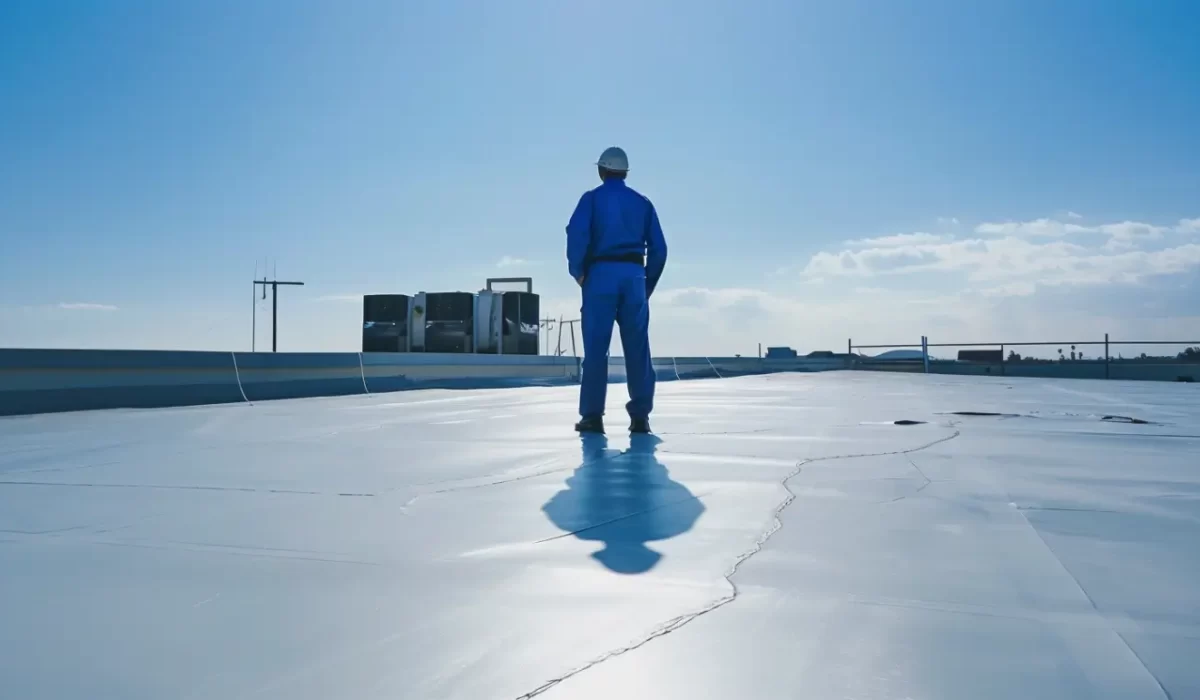In the realm of commercial properties, maintaining a flat roof comes with a host of unique challenges. Property owners must navigate decisions such as recoating or full replacement—a choice that significantly impacts the structural integrity and longevity of the roof. Companies like Fontaine Roofing in Orange County, CA, can assist in addressing common issues, understanding roofing materials, and recognizing the signs of wear, which are crucial for achieving optimal energy efficiency. By carefully weighing the pros and cons of each option, property managers can ensure a robust and dependable roofing solution tailored to their needs.
Understanding Flat Roofs in Commercial Properties
Commercial properties often utilize flat roofs due to their space efficiency and aesthetic appeal. These roofing systems, however, face unique challenges, including heat absorption and potential for widespread leaks, particularly in aging roofs. A thorough inspection is essential to assess the overall condition and identify minor issues before they escalate into significant structural damage. Property owners should be proactive in understanding their flat roof’s lifespan and choosing appropriate roofing materials, ensuring that they maintain structural integrity while prioritizing energy efficiency and long-term performance.
Contact Us
Common Issues Faced by Property Managers and HOAs
Property managers and HOAs face challenges with aging flat roofs, which can lead to leaks and water damage, threatening commercial buildings’ integrity. Increased maintenance is vital as damage escalates, with contractors advocating for proactive care to reduce repair costs. As a GAF Master Elite Contractor, CertainTeed Shingle Master, and Polyglass Preferred Contractor, our team adheres to top-quality standards. We are also approved applicators for Fiber Tite and IB Roofing Systems and hold TRI certification, reflecting our commitment to excellence.
Flat Roofing Materials Commonly Used in Orange County
In Orange County, CA, various flat roofing materials are prevalent, each offering unique advantages tailored to meet specific environmental conditions. Ethylene Propylene Diene Monomer (EPDM) is favored for its durability and energy efficiency, reducing cooling costs during hot months. Thermoplastic polyolefin (TPO) boasts reflectivity, enhancing energy savings. Additionally, built-up roofing (BUR) provides a robust protective layer against water damage. Selecting the right material, guided by a professional roofing contractor, ensures optimal performance and longevity for commercial buildings in this dynamic climate.

Recoating Flat Roofs: Process and Benefits
Flat roof recoating entails applying a new protective layer over the existing roofing material, addressing minor issues before they escalate. This process not only extends the lifespan of your roof but also enhances energy efficiency by reducing heat absorption, leading to lower cooling costs. The benefits include cost-effectiveness compared to full roof replacement and improved structural integrity. Engaging a professional roofing contractor ensures proper application and maximizes the performance of roofing systems, providing peace of mind for property owners.
What Is Roof Recoating and How Does It Work?
Roof recoating involves applying a new layer of protective material over an existing flat roof. This process helps seal leaks, enhances energy efficiency, and extends the roof’s lifespan. Typically, it includes surface preparation, application of the coating, and proper curing to ensure optimal performance.
Key Advantages of Recoating for Longevity and Performance
A primary advantage of roof recoating lies in its ability to extend the lifespan of your existing roofing system. By applying a protective layer, property owners can significantly enhance energy efficiency, reducing long-term cooling costs while minimizing wear from environmental factors. Recoating also addresses minor leaks and signs of wear before they escalate into more drastic repairs, ensuring structural integrity is maintained. This proactive maintenance solution presents a cost-effective approach, allowing property managers to secure peace of mind and keep their commercial buildings in top condition.

Process of Replacing Flat Roofs
Replacing a flat roof typically involves a systematic approach to ensure structural integrity and longevity. It begins with a thorough inspection to assess the condition of the existing roof and identify any underlying issues. After planning, an experienced roofing contractor will safely remove the old materials, addressing any structural damage before installing modern roofing systems that enhance energy efficiency and durability. This full roof replacement offers significant advantages, including improved cooling costs, longevity, and peace of mind, safeguarding against future repairs and water damage.
Steps Involved in a Flat Roof Replacement
Carefully assessing the existing roof’s condition is the vital first step in a flat roof replacement. A professional roofing contractor will conduct a thorough inspection to identify structural issues and water damage. After evaluation, the removal of damaged materials ensures a clean slate for the new roofing system. Following this, installation of modern materials occurs, often enhanced with protective layers for improved energy efficiency. Final touches include proper sealing and ensuring optimal drainage, establishing a roof with enhanced durability and reduced maintenance needs for years ahead.
Core Benefits of Complete Flat Roof Replacement
A complete flat roof replacement offers significant advantages that extend beyond mere aesthetics. By investing in a new roof, property owners enhance the structural integrity of their assets, ensuring peace of mind against leaks and water damage. Modern roofing materials provide improved energy efficiency, reducing cooling costs over time. Additionally, a full replacement eliminates ongoing maintenance concerns associated with aging roofs, ultimately fostering long-term cost savings and reliability. This proactive approach addresses underlying issues, guaranteeing a resilient solution tailored to the specific needs of commercial buildings.

Recoating vs. Replacement
Evaluating the long-term costs of recoating versus replacing flat roofs involves analyzing both immediate expenses and future implications. Recoating offers a cost-effective temporary solution, often enhancing the life of your roof at a lower initial investment. In contrast, full replacement, while pricier upfront, secures the structural integrity and energy efficiency benefits of new roofing materials. Property owners must weigh these options against maintenance needs and potential repair costs to determine the best decision for their specific situation.
Initial Costs Versus Lifetime Value
Assessing the initial costs of recoating versus replacing flat roofs involves understanding the long-term implications of each option. A recoating process typically presents lower upfront expenses, enhancing energy efficiency and extending the lifespan of the existing roof. However, a full replacement may incur higher initial costs but can provide peace of mind and structural integrity for years to come. Ultimately, property owners should weigh these financial factors, considering future maintenance needs and the condition of the roof to determine the best decision.
Maintenance Needs and Future Repair Expenses
Understanding maintenance needs is vital for effective management of flat roofs. Regular inspections can identify minor issues before they escalate into widespread leaks or structural damage, ultimately prolonging the roof’s lifespan. Future repair expenses should be anticipated, particularly for aging roofs, where small leaks can lead to significant water damage if left unaddressed. Partnering with a professional roofing contractor can provide peace of mind, ensuring the best course of action is taken for proactive maintenance and timely repairs, safeguarding your investment.
Trust the Experts
Understanding the nuances of flat roof maintenance is crucial for property owners navigating their options. Whether choosing recoating or complete replacement, careful consideration ensures that the selected solution meets the specific needs of the building. Factors such as structural integrity, energy efficiency, and overall condition of the roof play vital roles in making an informed decision. Ultimately, engaging a professional roofing contractor, such as Fontaine Roofing in Orange County, CA, can provide peace of mind in ensuring the longevity and performance of your flat roof, safeguarding your investment for years to come.
Read our blog: Streamlining Roofing Rollouts for Multiple Locations
Frequently Asked Questions
Which type of flat roof covering has the longest lifespan?
Among flat roof coverings, PVC (Polyvinyl Chloride) membranes are known for their longevity, often lasting over 25 years with proper maintenance. TPO (Thermoplastic Olefin) and EPDM (Ethylene Propylene Diene Monomer) also provide durability but may require more frequent repairs. Choosing the right material is crucial for long-term performance.
Is roof restoration better than replacement?
Roof restoration often proves to be a cost-effective alternative to replacement, especially when addressing minor damages. It extends the roof’s lifespan while minimizing disruption. However, for severely compromised roofs, complete replacement is sometimes necessary to ensure long-term integrity and performance.

